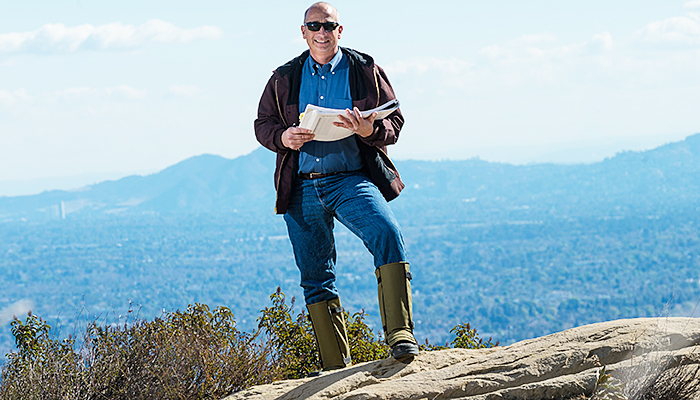From space race ... to open space

Environmental project manager Arthur Lenox leads the team testing soil and groundwater as part of Boeing’s remediation program at Santa Susana, California. (Boeing photo)
Growing up in California’s San Fernando Valley, Art Lenox remembers frequently hearing the sounds of rocket engine tests at the nearby Santa Susana Field Laboratory. It was a time when the United States was enthralled with space exploration, and the testing supported virtually every major U.S. space program.
A portion of the 2,850-acre (1,150-hectare) site was used for government rocket engine testing and energy research. It has been nearly a decade since the last rocket engine was tested here, and the vision for Santa Susana now is focused on preserving the site as open space.
“Santa Susana has always felt like my backyard. The close proximity, combined with my love of the outdoors, is why it’s so gratifying to be part of the cleanup and preservation of the site’s natural environment and beauty,” says Lenox, an environmental project manager who leads the team that conducts soil and groundwater investigations as part of Boeing’s remediation program.
Santa Susana is home to deer, bobcats, coyotes and cougars, and it sits within one of the last links of a vital habitat linkage that connects inland and coastal mountain ranges.
With the oversight of federal and state agencies, Boeing has made significant progress in cleaning up Santa Susana to environmental standards that are tougher than required for open space, Lenox said. For example, Boeing recently completed a four-year soil removal project to improve stormwater quality. More than 25,000 cubic yards (19,100 cubic meters) of affected soil were removed and precautions were taken to minimize the impact on streambeds and wildlife habitat.
“It is this extra level of care we take while fulfilling our cleanup and restoration commitments that represents Boeing’s environmental stewardship in action,” Lenox says.
Although much of the site’s remediation activity has relied on technology, Lenox says the key to Boeing’s progress is the involvement of and interaction with the community. “We share our open-space vision and build trust with the public by addressing concerns and answering questions,” Lenox says. “As the landscape at Santa Susana changes, it’s rewarding to see people enjoy the site as they attend a tour, nature walk or other event we sponsor.”
Santa Susana is transitioning from a historic industrial facility to open space, with native grasses and plants reclaiming the land in the footprint of former buildings. “I think more people are discovering what I’ve known all along: Santa Susana is a place of wonder, beauty and vast ecological value, and it will be for generations to come.”

